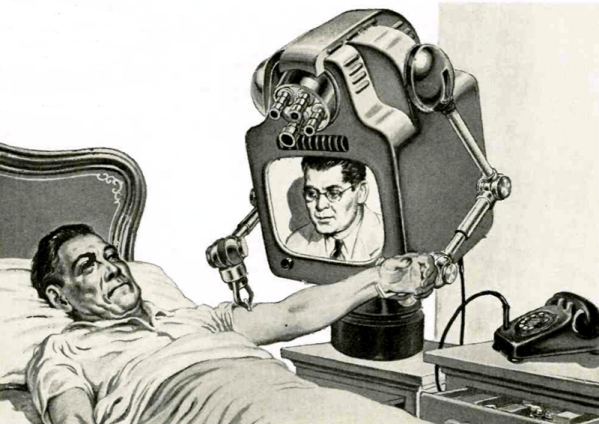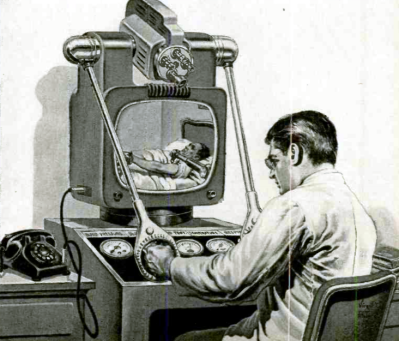The news this week was dominated by the novel coronavirus outbreak centered in Wuhan, China. Despite draconian quarantines and international travel restrictions, the infection has spread far beyond China, at least in small numbers. A few cases have been reported in the United States, but the first case reported here caught our eye for the technology being used to treat it. CNN and others tell us that the traveler from Wuhan is being treated by a robot. While it sounds futuristic, the reality is a little less sci-fi than it seems. The device being used is an InTouch Vici, a telemedicine platform that in no way qualifies as a robot. The device is basically a standard telepresence platform that has to be wheeled into the patient suite so that providers can interact with the patient remotely. True, it protects whoever is using it from exposure, but someone still has to gown up and get in with the patient. We suppose it’s a step in the right direction, but we wish the popular press would stop slapping a “robot” label on things they don’t understand.
Also in health news, did you know you’re probably not as hot as you think you are? While a glance in the mirror would probably suffice to convince most of us of that fact, there’s now research that shows human body temperature isn’t what it used to be. Using medical records from the Civil War-era to the 1930s and comparing them to readings taken in the 1970s and another group between 2007 and 2017, a team at Stanford concluded that normal human body temperature in the USA has been slowly decreasing over time. They proposed several explanations as to why the old 98.6F (37C) value is more like 97.5F (36.4C) these days, the most interesting being that general overall inflammation has decreased as sanitation and food and water purity have increased, leading the body to turn down its thermostat, so to speak. Sadly, though, if the trend holds up, our body temperature will reach absolute zero in only 111,000 years.
Wine, the not-an-emulator that lets you run Windows programs on POSIX-compliant operating systems, announced stable release 5.0 this week. A year in the making, the new version’s big features are multi-monitor support with dynamic configuration changes and support for the Vulkan spec up to version 1.1.126.
Any color that you want, as long as it’s amorphous silicon. Sono Motors, the German start-up, has blown past its goal of raising 50 million euros in 50 days to crowdfund production of its Sion solar-electric car. The car is planned to have a 255 km range on a full charge, with 34 km of that coming from the solar cells that adorn almost every bit of the exterior on the vehicle. Living where the sun doesn’t shine for a third of the year, we’re not sure how well this will pay off, but it certainly seems smarter than covering roads with solar cells.
And finally, here’s a trip down memory lane for anyone who suffered through some of the cringe-worthy depictions of technology that Hollywood came up with during the 70s, 80s, and 90s. Looking back through the clips shown in “copy complete” reminds us just how many movies started getting into the tech scene. It wasn’t just the sci-fi and techno-thrillers that subjected us to closeups of scrolling random characters and a terminal that beeped every time something changed on the screen. Even straight dramas like Presumed Innocent and rom-coms like You’ve Got Mail and whatever the hell genre Ghost was got in on the act. To be fair, some depictions were pretty decent, especially given the realities of audience familiarity with tech before it became pervasive. And in any case, it was fun to just watch and remember when movies were a lot more watchable than they are today.














